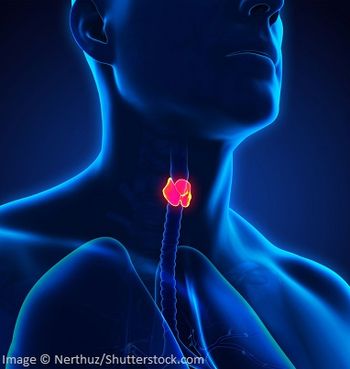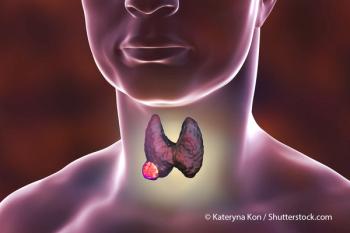
BMI, Body Surface Area Predictive of Papillary Thyroid Cancer Characteristics in Women
A retrospective cohort study showed that body mass index and body surface area are predictive of certain behaviors of papillary thyroid carcinoma.
A retrospective cohort study showed that anthropometric parameters such as body mass index (BMI) and body surface area (BSA) are predictive of certain behaviors of papillary thyroid carcinoma (PTC) including multiplicity and extrathyroidal extension (ETE) in women, but not in men.
Recent research has shown an increase in prevalence of large PTCs, suggesting that environmental or other factors might be contributing to a raise in thyroid cancer cases. Studies investigating possible links between BMI and PTC have yielded mixed results.
Researchers led by Seo Ki Kim, MD, of Sungkyunkwan University School of Medicine in Seoul, South Korea, conducted a retrospective cohort analysis of 5,081 PTC patients who underwent total thyroidectomy with bilateral central neck dissection between 2002 and 2015. The results were
The analysis was separated by gender because of sexual dimorphism in obesity. Only among women, being overweight (BMI, 25 to 30 kg/m2) was an independent predictor of multiplicity, which was defined as two or more PTC lesions in a single lobe; the adjusted odds ratio (OR) was 1.187 (95% CI, 1.006–1.401; P = .042). Obesity (BMI ≥ 30 kg/m2) was more strongly associated with multiplicity, with an OR of 2.231 (95% CI, 1.590–3.129; P < .001).
Both overweight (OR, 1.237 [95% CI, 1.048–1.459]; P = .012) and obesity (OR, 1.789 [95% CI, 1.188–2.692]; P = .005) were also independent predictors of ETE in women. Elevated BMI was not associated, however, with bilaterality or central lymph node metastasis.
The investigators also analyzed the relationship between BSA and PTC behavior. In women, being in the top two quartiles for BSA was independently predictive of PTC multiplicity. For the top quartile, the OR was 1.524 (95% CI, 1.202–1.933; P < .001), and for the third quartile the OR was 1.205 (95% CI, 1.002–1.450; P = .049).
In men, neither higher BMI nor higher BSA was significantly predictive of any of the PTC behaviors.
The authors wrote that the difference between men and women seen in this study could be explained by differences in how fat is stored, but they also pointed out that the study included more women (3,978 patients) than men (1,103 patients), and the results in men could simply have not reached significance with those numbers.
“Further studies on the relationship between obesity and the clinicopathological characteristics of PTC, particularly molecular markers such as BRAF mutation, may provide additional information on management of PTC patients,” the authors concluded.
Newsletter
Stay up to date on recent advances in the multidisciplinary approach to cancer.















































































